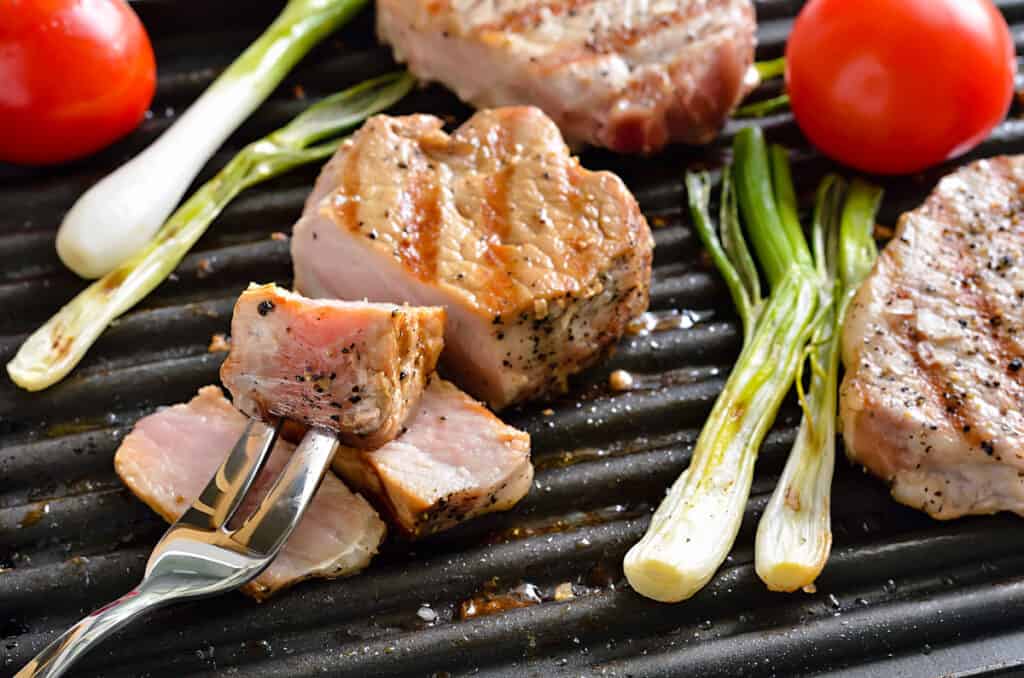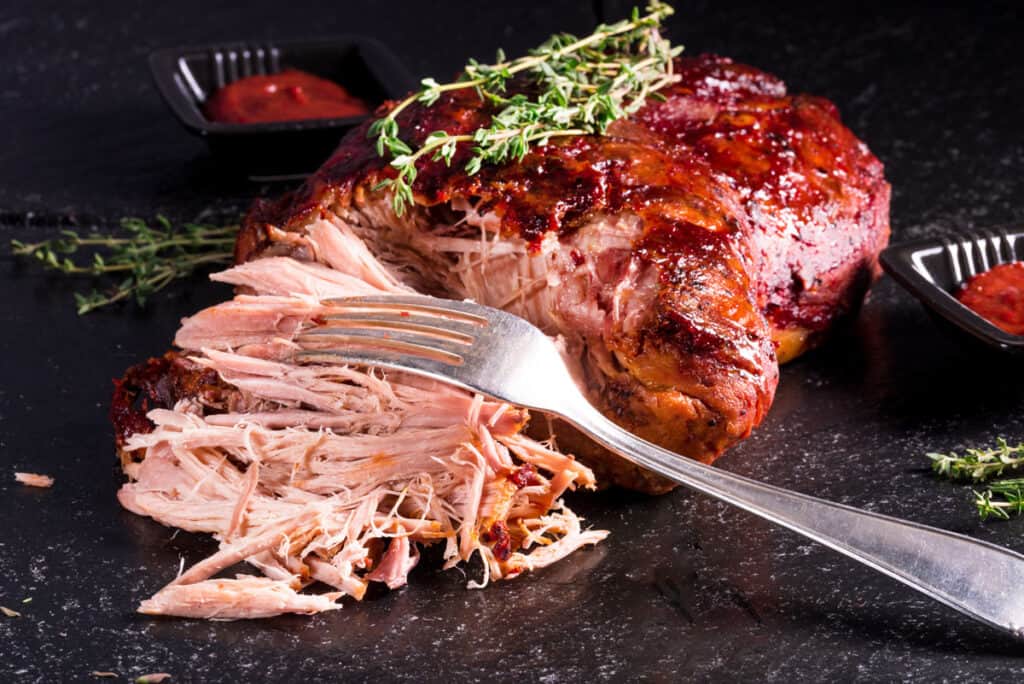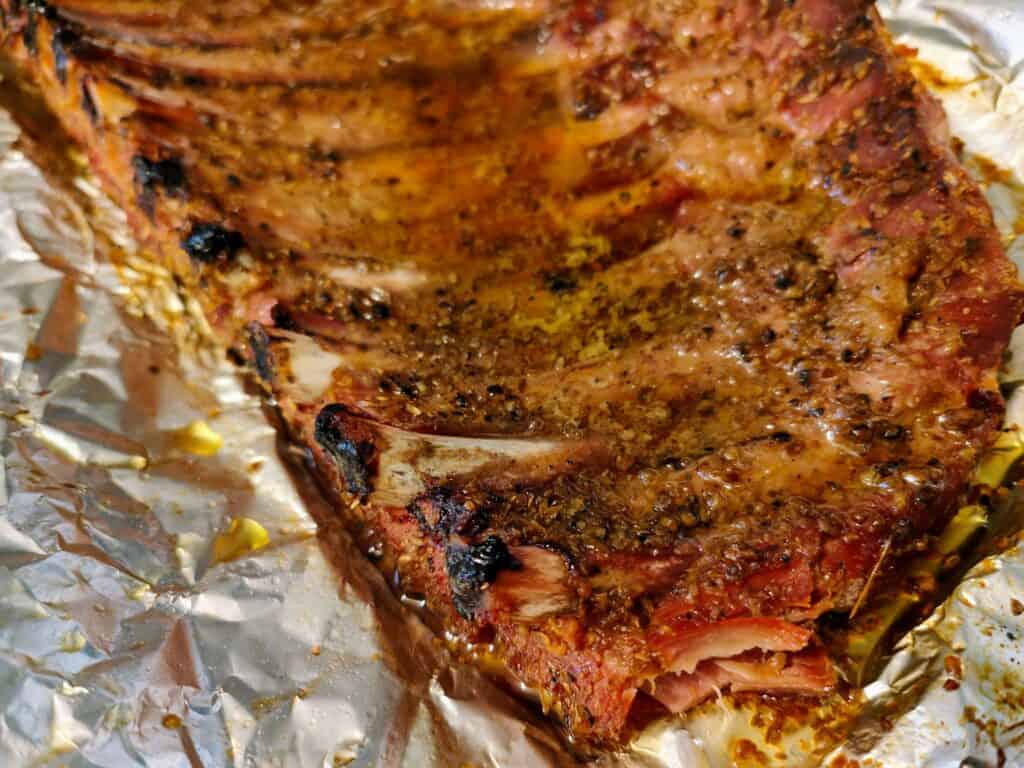Did you know that it’s now considered safe to consume medium rare pork? If you’ve only eaten pork chops that were cooked past 160 degrees, this could be a game changer. In this ultimate guide to medium rare pork, we’ll talk about what this means for your barbecue.
Medium Rare Pork
Thanks to improved farming techniques, you can eat medium rare pork—that is, pork that’s cooked to at least 145 degrees Fahrenheit—without worrying about food-borne illnesses. However, this rule doesn’t apply to ground pork, which should still cook to at least 160 degrees. Some other cuts like pork shoulder would also benefit from longer cooking times.
Why It’s Important
Experts used to recommend cooking all pork to at least 160 degrees Fahrenheit, regardless of the cut. In fact, many home chefs believe this is still the safe temperature.
The USDA changed those guidelines in 2011. Since then, the safe cooking temperature for pork has been reset at 145 degrees. Since tender cuts like the loin are unpleasantly tough and stretchy when cooked to that temp, the change is a welcome one.
Why did the UDSA change its tune? The answer has to do with improved technology, especially as it relates to farming practices.
For years, hogs that were raised for slaughter were kept outdoors most of the time. Under these conditions, they were exposed not only to the elements, but to whatever organisms were lurking in the dirt—including the trichinella parasite.
Trichinella is the parasite that leads to trichinosis, a food-borne illness. If meat is infected with this parasite, it needs to be cooked thoroughly in order to destroy this dangerous bacteria.
While trichinosis is still a concern, it’s not as prevalent today. Farmers are enlisting stronger safety measures to reduce the risk of exposure to trichinella. Therefore, you don’t have to worry as much about contracting trichinosis from undercooked pork.
Improved Safety Practices
What measures are being taken to cut down on the risk of trichinosis? For one thing, most farmers are committed to showering before and after they enter the hog enclosures. But the safety practices are even more strident when it comes to the animals themselves.
One major step has been to move the farming practices indoors. When the pigs are inside most of the time, their exposure to the trichinella parasite is limited. What’s more, their stalls are kept clean and free of waste.
Improved air filtration systems are another factor. Many farms use HEPA (high efficiency particulate air) filters to remove particles of mold and bacteria from the air that enters the barn. Temperature control and improved veterinary care also play huge roles.
At What Temperature Is Pork Considered Medium Rare?
Unlike steak, which is considered medium rare at 130 to 135 degrees Fahrenheit, pork hits this stage at around the 145-degree mark. In general, you can refer to your pork as medium rare if it falls into the range between 145 and 150 degrees.

Once pork cooks past 150, it starts to creep into medium to medium well territory. After 160 degrees, it’s considered well done. Unless you’re working with ground meat or a cut that requires a longer cooking time (see below), it’s better to stop cooking before this.
Which Cuts Are Best Served Medium Rare?
Lean and tender cuts benefit most from this treatment. The pork tenderloin, which bisects the loin area, is the most tender cut of all. It’s best to remove the tenderloin from the heat as soon as it registers an internal temp of 145 degrees.
Pork loin, which is larger and slightly less tender than the tenderloin, is another cut that’s excellent when served medium rare. Since pork chops are cut from the loin, we would recommend cooking those to medium rare as well.
Remember that you should always allow the meat to rest for a few minutes after taking it off the heat. A whole pork loin roast might need to rest for 10 to 15 minutes. Pork chops and tenderloin, meanwhile, should be good to go after a 5-minute resting period.
Which Cuts Should Be Cooked Past Medium Rare?
Ground Pork
All ground meat should be cooked to 160 degrees Fahrenheit. That’s true of red meat like pork and beef as well as ground poultry products.
Although whole muscle cuts can be served at lower temperatures, you need to be more careful with ground meat. That’s because the bacteria that cause food-borne illnesses linger on the surface of the flesh.
When you cook a whole muscle cut, you’re exposing the surface to high heat, thereby destroying the bacteria. Once the meat has been ground together, though, the surface flesh—and any potential bacteria—get all mixed in together as well.
Cooking ground pork to 160 degrees is the only way to ensure the destruction of any lingering bacteria. Fortunately, ground meat should have enough fat in it to remain juicy, even when it’s cooked to a higher temp.
Pork Belly
Pork belly is technically done when it’s cooked to 145 degrees. However, this is a fatty cut that benefits from a longer cooking time.
Some recipes might call for an internal temp of 165 degrees for pork belly. However, in most cases, we prefer to let it cook to about 190 before we call it quits.
The meat from the hog’s belly is very rich, with fat that crisps up when exposed to the heat. We think it’s more succulent when allowed to cook to a higher temperature. It will have a texture similar to pulled pork, but the high fat content should prevent it from drying out.
Pork Shoulder/Pork Butt
Cuts that are taken from the pork shoulder, including the Boston butt, need to cook way past 145 degrees in order to be palatable. In fact, we recommend cooking them until they hit the 200-degree mark.
A whole pork shoulder is made up of two subprimals: the pork butt and the picnic shoulder. The butt is located on the upper portion of the primal, while the picnic shoulder extends down toward the animal’s leg.

A pork butt, or Boston butt, has a rectangular shape and an impressive amount of marbling. The shoulder is somewhat lopsided in appearance, and while it has a sizable fat cap included, the meat doesn’t have as much intramuscular fat as the upper section.
Both cuts contain a great deal of connective tissue. This element, coupled with the high fat content, means that the meat needs to cook for a long time in order to bring its best characteristics to the fore.
When the collagen in all that connective tissue is exposed to heat, it will eventually transform into gelatin. This doesn’t take place until the meat cooks to 160 degrees. Moreover, the process requires time as well as heat—it doesn’t happen all at once.
Although pork fat starts to render at around 130 to 140 degrees, this process can’t be rushed either. You want the fat to cook down slowly so that it contributes richness and flavor to the pork. Otherwise, you’ll wind up with tough, rubbery patches throughout.
Pork butt is our preferred cut when pulled pork is on the menu. The pork should be tender enough to shred if you cook it to 195 degrees, but it comes apart even easier if you wait until it reaches 200 degrees.
You can also use pork shoulder to make pulled pork. However, this cut is also impressive when carved into thin slices. If you want to slice the meat, remove it from the heat when the internal temperature hits 180-185 degrees.
One caveat: Pork steaks, or pork blade steaks, are cut from the shoulder section of the hog. However, they’re sliced so thin that they can handle being cooked to just 145 degrees. Try searing them for just a few minutes per side, then resting for 3 minutes.
Ribs
When smoking pork ribs, you’ll find that 195 degrees is the ideal temperature. You want the texture to be similar to that of pulled pork: tender enough to come apart easily, but not so soft that it falls right off the bone.
If you don’t cook pork ribs long enough, the meat will be dry and tough. Although this requires a bit of time and patience, the results are worth the wait.

For baby back ribs, aim for a cooking time of about 5 hours. You can follow the 2-2-1 rib method by wrapping the meat after 2 hours on the smoker, or enlist the 3-1-1 technique for a more robust bark and increased smoke flavor.
Spare ribs, which are larger and heavier, need to cook for another hour or so. We prefer using the 3-2-1 method for spare ribs—this gives them 3 hours to soak up the smoke flavor, then another 2 hours in the foil to promote tenderness.
You can test the ribs for doneness by inserting a toothpick in the center of the rack. If it slides in and out easily, the ribs are probably ready to come off the smoker. Another test is to stand the rack on one end and bounce it lightly up and down to see if it cracks in the middle.
That said, the only way to be sure that the meat has hit the proper temp is to insert an instant-read thermometer between two of the ribs. If it reads 195 degrees Fahrenheit, the ribs are done.
The Bottom Line
It’s technically safe to eat medium rare pork, unless the meat was ground before you cooked it. However, this isn’t the best idea for all cuts.
Make sure the cut you’re buying is right for the preparation technique you have in mind. In fact, this is a good rule to follow even if you prefer your meat on the well side of medium.
Best of luck, and happy grilling!

